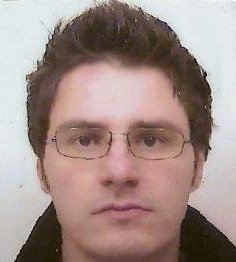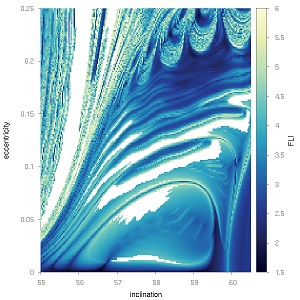
Research Topic
Most of the studies on the field of Astrodynamics, concerning Asteroids and Space Debris, are mainly focused in their orbital evolution. And for a good reason, since the accurate estimation of their future position can address a lot of potential hazards they pose to human assets. However, there are several cases in which their rotational state of the body also kicks into the equation. For example, in Active Debris Removal Mission design or in close proximity operations for Asteroids, the attitude of the body plays a very important role. The main goal of Ioannis' research is to model and simulate the rotational motion of asteroids and space debris and study the spin-orbit interactions.
Main Results
Almost 15% of the Near Earth Asteroids have a moonlet companion. This population provides a natural laboratory for testing any spin-orbit coupling theory. From our experience from the planetary satellites, the synchronous rotation is the final state in most cases. However, asteroid moonlets have much more irregular shape than the Moon, leading us to the expectation that exotic rotation states might also exist. Ioannis' main work explores the possibility of exotic stable rotational states of a highly asymmetric moonlet in orbit around an asteroid.
Ioannis is also involved in a collaborative project with Fabien Gachet ,Aaron Rosengren and Jerome Daquin, studying chaos and resonances in Earth satellite orbits with a focus on their implications to the Space Situational Awareness and the space debris problem. In their work, a large portion of the Medium Earth Orbit region is explored with the use of a simple dynamical model based on a vector formulation. (figure)

3. References
Coming soon!
4. Resources
Coming soon!